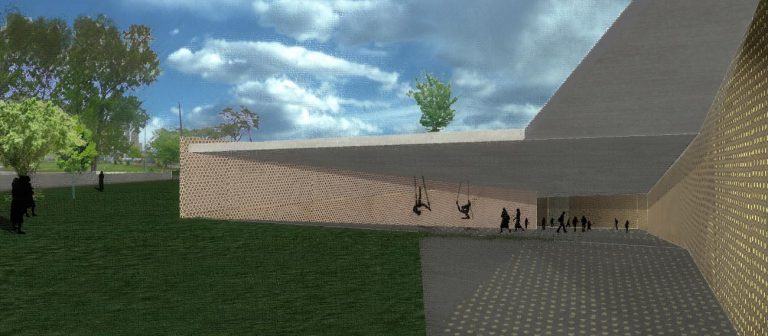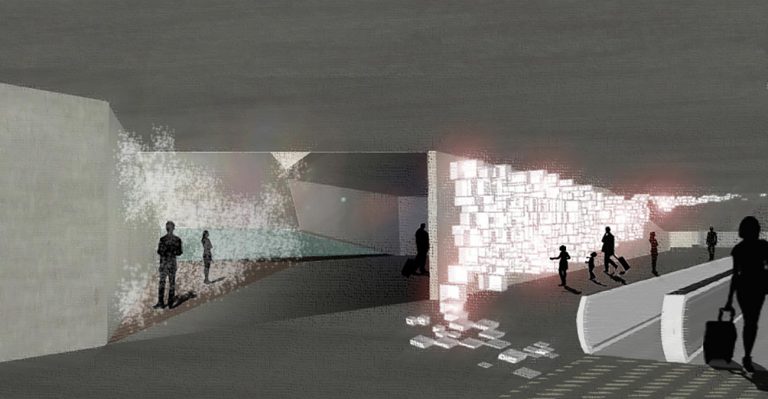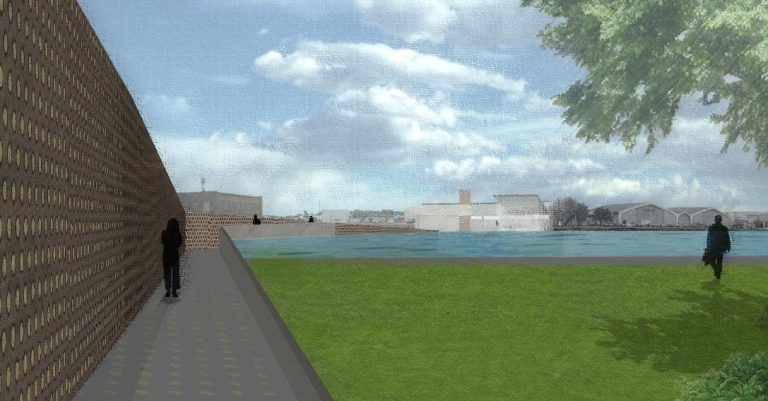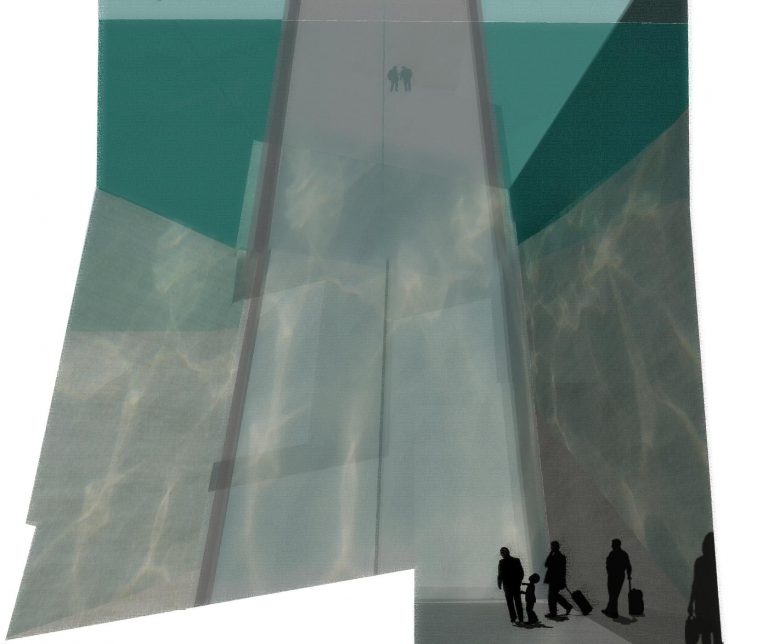In Search of ‘PLACE’
“Space does not exist for the eye only; it is not a picture: One wants to live in it” El Lissitzky
Physical features alone do not form a ‘place’. It is through the relationship between human emotional and physical sensitivity and a given location that ‘place’ is distinguished from undifferentiated sameness of ‘space’. A ‘place’ comes to be remembered because it has affected our body and mind by generating enough associations to be held in our long-term memory. Senses, orientation of the body and its movements are elements that together have the ability to empower the embodied memory of ‘space’ and transform the mere physical ‘space’ into ‘place’ for us.
This project incites the proposed underground pedestrian tunnel between Toronto’s mainland and Billy Bishop Airport to become a ‘place’ rather than just mere physical ‘space’. Whether experiencing the city for the first time or leaving it behind, the passage through this tunnel is distinctly narrated for its travelers to encode them with a sense of ‘place’. Herein, water and light serve as the main narration devices. The presence of water is not limited to the surface but rather continued underground. As the travelers move through the tunnel, they see, feel and smell it around them. This interaction is aided by the latter device of light, in some instances natural while in others artificial. Together water and light are used to manipulate the perceptions of this tunnel by recommending specific movements and orientations to profoundly jolt the senses of the travelers deep into their memory banks.
The outcome suggests that ‘place’ can be found within any ‘space’ by way of proper design interventions.









